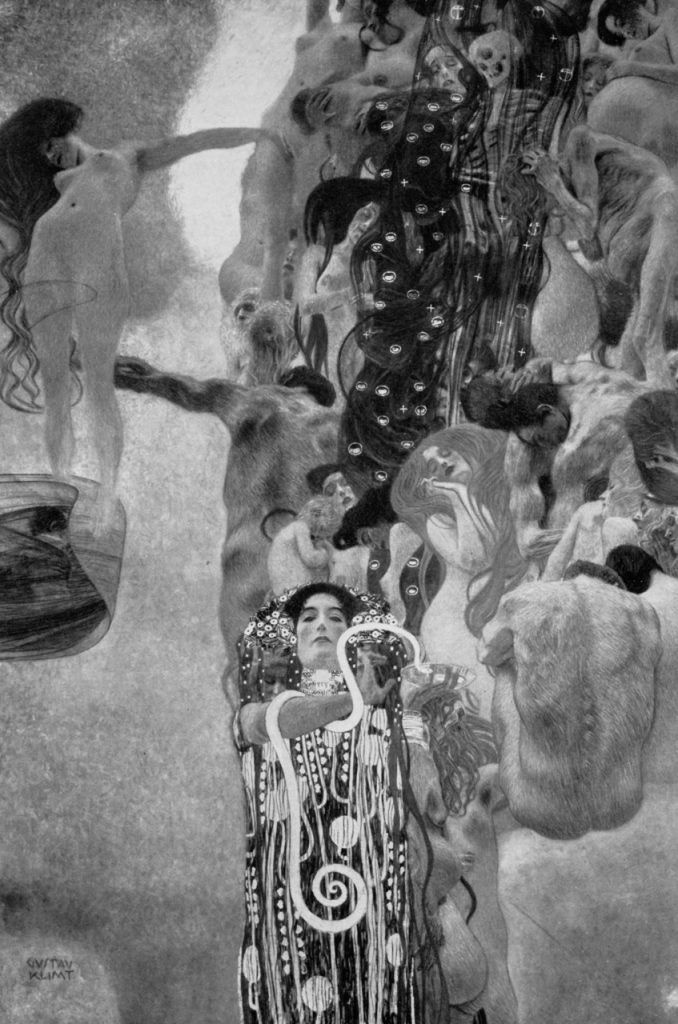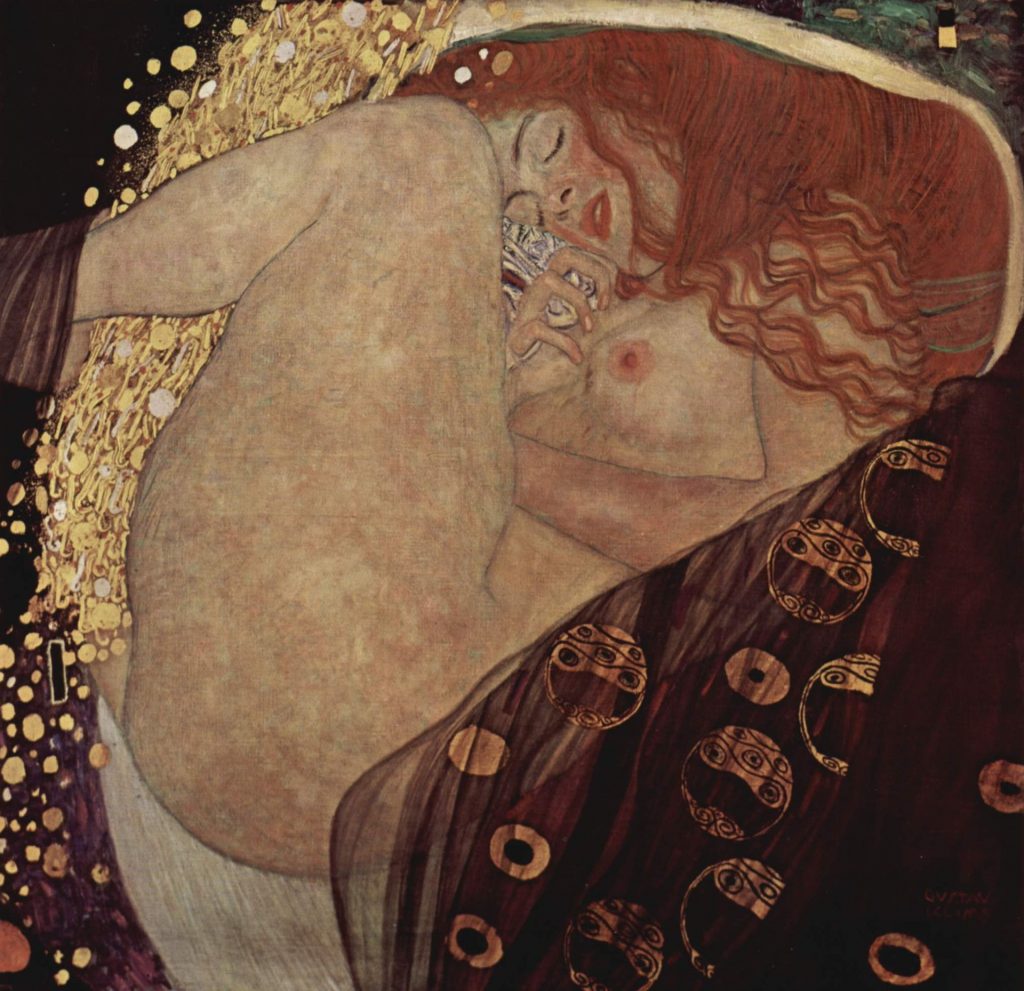Gustav Klimt
Gustav Klimt was an Austrian symbolist painter and one of the most prominent members of the Vienna Secession movement. Klimt is noted for his paintings, murals, sketches, and other objets d’art. Klimt’s primary subject was the female body, and a frank eroticism marks his works, which caused a storm of scandals and discontent on the part of society. Among the artists of the Vienna Secession, Klimt was the most influenced by Japanese art and its methods.

He was born in Baumgarten in 1862. Gustav grew up in a large family where were six other children besides him. Klimt’s father was engaged in engraving, and his mother was a failed musician. For most of Klimt’s childhood, his family lived in poverty.
Gustav was taught to draw by his father, and then in 1876, he began studying at the art school in Vienna, where he studied architectural painting. In 1880, Klimt and his brother began collaborating with the artist Franz Mach on painting theatres. From 1885 to 1888, they designed the building of the “Burgtheater.” For his success in painting, Gustav was awarded the “Golden Cross.”
In 1992, Gustav lost his father and brother, and therefore he had to support his family financially. This greatly influenced his character of painting and marked the beginning of his own style.

The artist was hired to create three paintings representing such faculties as “Philosophy,” “Medicine,” “Jurisprudence” in 1894. They were supposed to decorate the ceiling of the assembly hall in the main building of the University of Vienna. They were completed only in 1900 and received sharp criticism for an overly explicit genre called “pornographic.”
Despite the sharp criticism, I personally think these works are incredible. I was particularly struck by his works for philosophy and medicine. I am incredibly sorry that they were destroyed.

The “golden period” of Klimt’s work was the most productive for him. The name of this wasn’t by chance. At that time, Klimt began to actively use gilding in most of his works, thanks to which many paintings were very popular. One of the most famous paintings of this period is “The Kiss” (1907-1908).

Klimt had quite a lot of fame, so he had a lot of customers, and he could afford to choose the work he was most interested in. He never finished many of his paintings.

References
https://en.wikipedia.org/wiki/Gustav_Klimt
Klimt, Gustav. (2018). In Helicon (Ed.), The Hutchinson unabridged encyclopedia with atlas and weather guide. Helicon. Credo Reference: https://ezproxy.capilanou.ca/login?url=https://search.credoreference.com/content/entry/heliconhe/klimt_gustav/0?institutionId=6884
https://en.wikipedia.org/wiki/Klimt_University_of_Vienna_Ceiling_Paintings
https://www.biography.com/artist/gustav-klimt
https://www.theartstory.org/artist/klimt-gustav/life-and-legacy/

November 29, 2021 at 5:30 pm
Liza,
Excellent post on Klimt! You have plenty of interesting background information but you combine that with your own personal thoughts and insights into his work which is what I’m looking for.
Also your PK presentation on Frida Khalo was solid. Nice choice of slides showing a photo history and images of her work. You also had good personal thoughts about the paintings as well. There were a couple of gaps in your monologue between some slides but that does often happen with these things. That said I’m giving you a 2/2 for your latest blog post and an 8/10 for the PK. Well Done!
Jeff